A few months ago, Broken Sword creator Charles Cecil walked out of the office of Revolution Software and onto the Shambles, the Diagon Alley-esque street that has survived since York’s days as a medieval trade hub. He closed the door behind him, somewhat grumpily – he’d had to work late, and it was already past eight o’clock. Then a voice piped up behind him.
“And one day, when you get older, you will play Broken Sword,” said a young woman to her toddler. “This is where Revolution are based.”
Cecil had stumbled across an annual pilgrimage to the site where British point-and-click adventures are made. From the sounds of it, this young woman was not alone in making the journey. Cecil registered Revolution’s office address on Google a year ago – and received an email to say that 40,000 people have checked it out since.
“We’re incredibly blessed to have a really positive and lovely collection of people who want us to succeed and love the games that we write,” Cecil says. “We love our interaction with them.”
These might read like the words of a good community manager, rather than a man expressing a deeply-held sentiment. Yet Cecil does not take his relationship with Revolution’s fans for granted. At times in his long career, he has lost touch with his audience. And at others, he’s feared they might turn their back on him.
In the early ’80s, when Cecil was writing text adventures for Artic Computing, he would go to microfairs. “We would meet fans, and it was wonderful, because they would tell us what they liked and what they didn’t,” he says. “There was this real camaraderie. And then through the ’80s, publishers and retailers came to prominence. And we got pushed further and further away from the relationship with our fans. So by the time of Revolution, in 1990, there was really no way that we could have any direct interaction.”
By the end of that decade, despite Revolution’s successes with Broken Sword and Beneath a Steel Sky, publishers and retailers had squeezed the developer’s profits to the point of – quite literally – no return. When Broken Sword 3 was making THQ millions, Revolution had to go to the local bank and borrow £200,000. “Being an independent developer was a pretty miserable place to be,” Cecil says.
The early noughties were dark times, particularly for point-and-click developers looking to fund their projects in the age of 3D. “It felt like Revolution was over,” Cecil says. “But there were always going to be new opportunities emerging. And I guess I hoped that my experience of interactive narrative would carry me through, which is why I then worked on Doctor Who: The Adventure Games and The Da Vinci Code and various other projects, which I really enjoyed. It was challenging and exciting. So you know, I have no regrets whatsoever.”
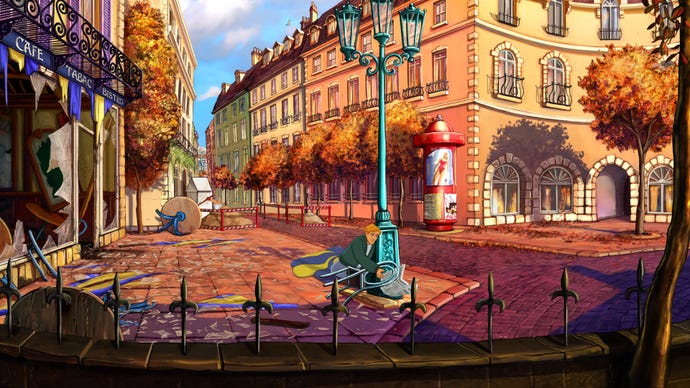
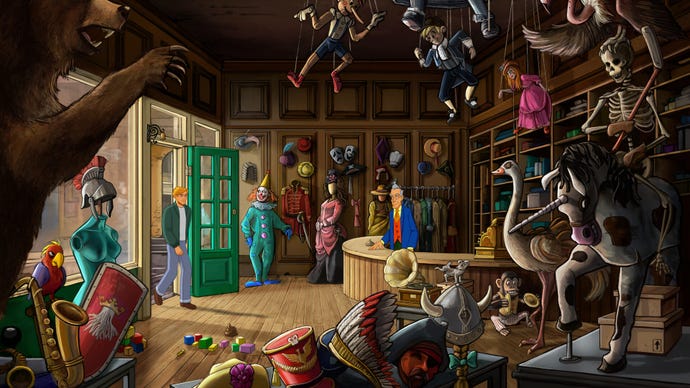
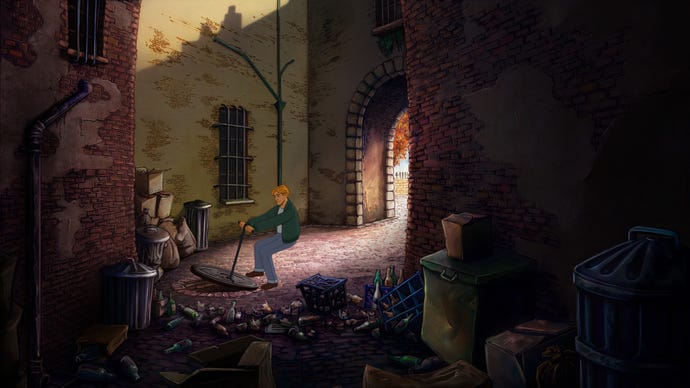
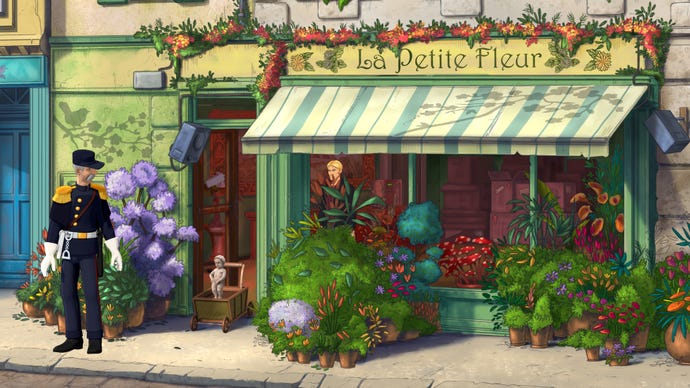
The situation only really changed with the rise of Steam and the App Store, when Revolution’s profit share shifted from 7% to 70%. “Obviously, we needed to fund the games ourselves, which is why Kickstarter was so effective,” Cecil says. “And all the jobs that the publisher would otherwise have done, we had to do. But the revenues we got were so substantially higher than we had previously, that we were in this sort of nirvana.”
“I think that the American developers had a very different attitude towards [Kickstarter] than the British.”
With crowdfunding, the fans had come to Revolution’s rescue. Launching the Kickstarter for Broken Sword 5: The Serpent’s Curse was a euphoric experience. As Cecil says: “It’s a niche audience, but by God, it’s passionate.” The thing about passion, though, is that it’s strong and volatile – and if you’re not careful, love can turn to hate.
Cecil and I have come into contact just once before. Back in 2013, at the height of the Kickstarter revolution, I spoke to him on behalf of a media outlet to ask why The Serpent’s Curse had been split into two parts. Speaking on the phone from Germany, his voice quavered as he explained the decision.
“I was nervous,” Cecil says now. “I was nervous that our fans were going to turn against us.”
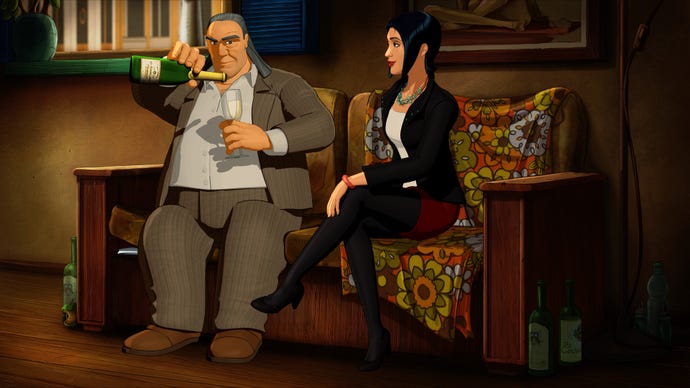

Earlier that year, a number of high profile Kickstarter projects had gone off the rails. Snow Crash author Neal Stephenson had raised over $526K to make a sword fighting game named Clang, before putting the project on hold – citing a lack of publisher financing and a risk-averse games industry. “He gave loads of reasons,” Cecil says. “But there was absolutely no sense of humility, no sense of an apology. It was like, ‘I’ve taken the money, it hasn’t worked’. And to an extent, Broken Age was doing the same.”
Double Fine Adventure, as it was initially known, had opened the floodgates for gaming Kickstarter campaigns. But it became controversial when designer Tim Schafer announced that he had “designed too much game, as I pretty much always do”, and that Broken Age would be released in two separate parts in order to fund the remainder of the game.
“It was, ‘There but for the grace of God go us all.’”
“He said, ‘We’re going to produce a second half,’ as if Tim Schafer was doing the fans a favour,” Cecil recalls. “I think that the American developers had a very different attitude towards [Kickstarter] than the British. From my perspective, this was our community, who put their full trust in us. And to let them down would have been absolutely awful.”
Revolution had reason to fear a fan backlash. During their own Kickstarter campaign for The Serpent’s Curse, Cecil had “for some stupid reason” told backers to expect a development time of six months. “And one of the stretch goals was an extra section,” he says. “How can I expect to finish the game in six months if we have new sections? It was very naive.” Having already delayed launch once, Revolution was approaching the end of 2013 and running out of money. “The mood had turned because of Clank and Broken Age and Godus, and a number of other very high profile [crowdfunding controversies],” Cecil says. “It really, really scared me, and that was where we took the decision to split. Because I did not want to go into 2014 making more promises, when there would be this real risk that our fans would actually stop trusting anything that we said.” Revolution delivered the first half of the game to backers before Christmas, and didn’t ask fans for any more money.
Compounding Cecil’s fears was Rock Paper Shotgun’s interview with Peter Molyneux – a very public reckoning on the subject of Godus and unfulfilled promises, after which the Populous designer swore off press contact for a spell. “He’d come a cropper, which was a shocking moment as a developer,” Cecil says. “It was, ‘There but for the grace of God go us all.’”
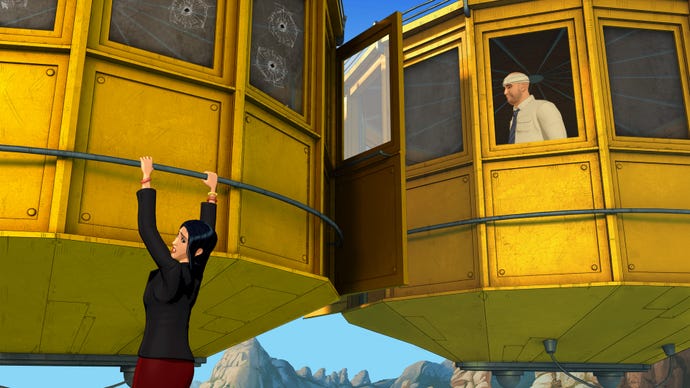
For Cecil, it was a moment of realisation about the power of social media. “The publishers would always stick with national treasures and support them through thick and thin, and I guess broadly the magazines would too,” he says. “And the power of the audience suddenly emerged. I really admire Peter, I think he’s written some fantastic games – my criticism of him would be that he will have seen this upswell of anger amongst his community, and he chose not to do anything about it at that time. And I would imagine that is something he probably regrets now.”
Today, Cecil regrets splitting The Serpent’s Curse into two parts. He believes that the staggered release impacted its sales and reception. “But it was a pragmatic decision that we had to make at the time,” he says. “I was absolutely delighted when we were able to release the full game, and it was well received.”
Revolution managed to retain the goodwill of its loyal audience, and the experience hasn’t scared the studio away from crowdfunding. Just this year, the developer Kickstarted the collector’s edition of Broken Sword: Reforged. The enhanced remaster, which released in September, has allowed Cecil to correct some nagging goofs in the original adventures of American tourist George Stobbart and Parisian photo-journalist Nico Collard.
“I’m not at all scared to change things that were illogical,” Cecil says. “In the very opening, in the cafe, we see a clown put an accordion with a bomb in it on a stool. And yet the bomb blast is actually in the middle of the room, and the stool is standing there as if nothing had happened. It makes no sense. Very few people, if anybody, will notice. But subliminally they will know that something is wrong.”
Minor details like these have irritated Cecil for 25 years. “There’s a drain pipe. George pulls it, and he says, ‘I guess the clown didn’t escape that way’. You can see that the pipe doesn’t go to the top of the screen, so of course he didn’t escape that way, so why is George saying that?”
Moving stools and lengthening pipes are two of the ways in which Revolution has prepared Broken Sword for a new generation – beyond the diehards who have stuck with the studio through genre downturns and Kickstarter crises. “Our wonderful, passionate fans are probably quite forgiving of these continuity errors,” Cecil says. “And I would imagine that a new audience would be less forgiving.”